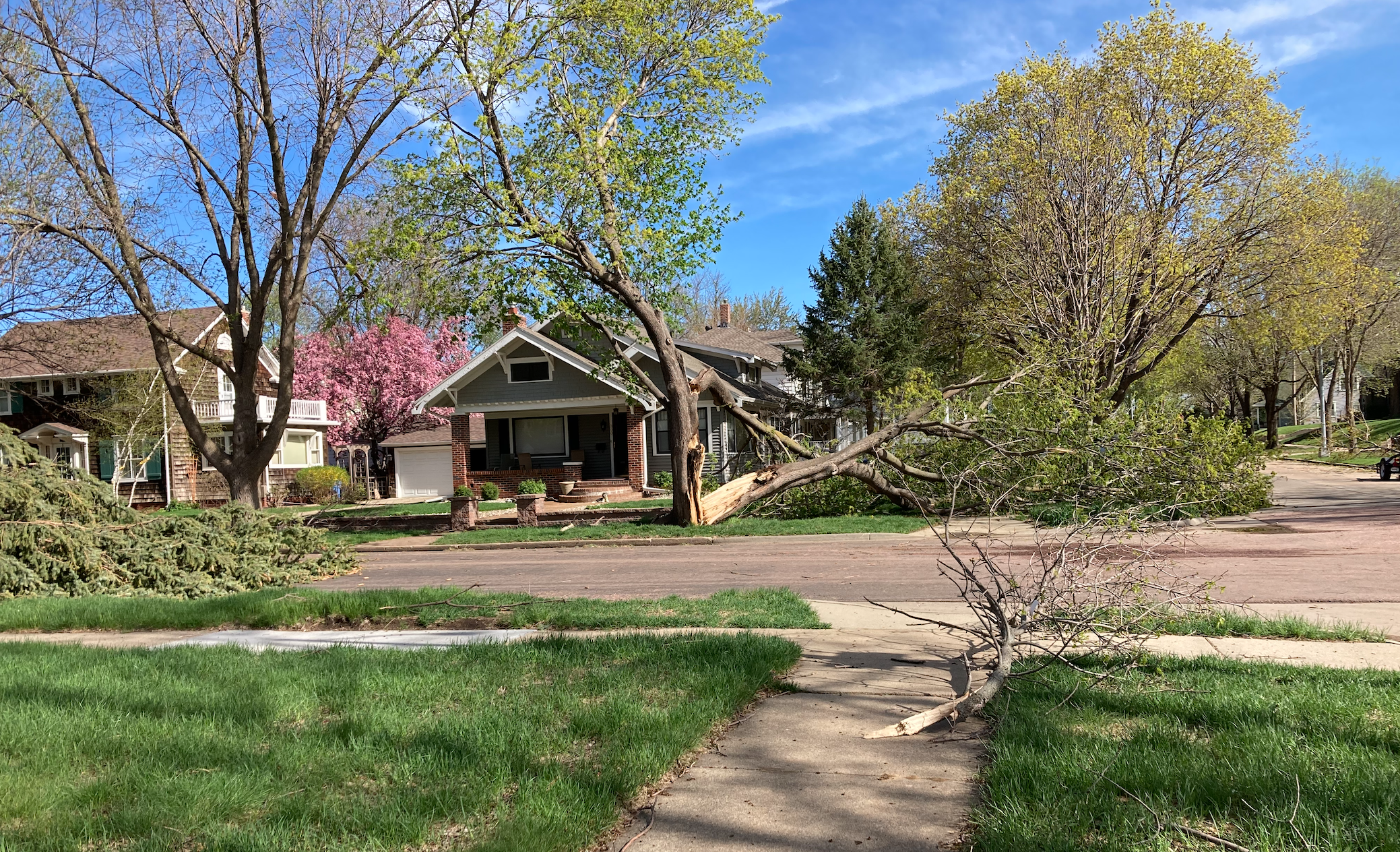Simplified: Sioux Falls has already seen a near record-breaking year with 187 combined severe thunderstorm and tornado warnings. Here's why some of those storms have been more damaging this year, and what this could mean for future seasons.
Why it matters
- The last three severe storms brought strong winds, hail and rain, leading to power outages, severe property damage, and – in the case of the May 12 storm – loss of life.
- Current temperatures and weather patterns are creating ideal conditions for severe storms, including potential for tornadoes, winds and hail, said meteorologist Philip Schumacher with the National Weather Service.
- We still don't know exactly what a changing climate will do to local storms in the city, but this year's temperature patterns could mean additional severe weather still to come this season.
"We all talk about how destructive tornadoes are, and they are destructive, but we've seen this month that severe thunderstorms, winds and hail can do a lot of destruction," Schumacher said.
Why have storms been more severe this spring?
Three big reasons: winds, moisture and heat.
- The winds aloft, or the winds in the atmosphere above what we experience as weather, are stronger this year. These winds impact storm formation and organization.
- Right now, There's also more heat and humidity than normal, which act like fuel for a storm, Schumacher said. The city typically sees storm tracks head into the area around this time, but the heat and humidity act like fuel Schumacher said.
- This spring has also brought more moisture in the Northern Plains according to Schumacher, which means more storms.
Together, these three things create storms that organize and stay together for longer, meaning more damaging effects.
Are severe storms the new normal?
There's still no strong answer from storm research.
Kenneth Blumenfeld, senior climatologist for the Minnesota state climate office, said this is one of the first years where we've seen these storm effects. We would need more similar years to say whether this was a continual trend.
- The jet stream, which carries those winds aloft mentioned above, is also unpredictable. Blumenfeld said this changes every year and is harder to predict ahead of time.
What we do know is that rainfall amounts are increasing.
- Blumenfeld said there has been a steady increase in the total rainfall, even with regular highs and lows.
- The overall increased global humidity can impact storms, but the winds aloft are one of the larger determining factors for how storms form each year.
“Even when we go into really dry conditions, there's more heat around the world and there's also more moisture around the world," Blumenfeld said. "So when some kind of weather system taps into that additional heat and that additional moisture, we can have bigger thunderstorms with heavier rains.”
What happens next?
The winds aloft start to slow down as we head into June and July, making it harder for weather to organize and carry across the city. The jet stream usually undulates around the area, pushing the winds aloft into Canada by this point in the season.
Typically, the height of severe storm 'season' for Sioux Falls is between Memorial Day and July 4.
- The extra heat and humidity this year meant the weather started earlier, but there's still a likelihood of more storms.
- The severe storm season doesn't technically end until October.
How to prepare for severe weather
- Make sure you've got a plan for when severe weather hits. Some of the severe storms warnings don't come with a lot of time to prepare beforehand.
- Sign up for alerts from the National Weather Service or other weather sources so there's more than one way that you get warning notifications.
- Don't travel during severe weather. Larger vehicles are likely to tip during high winds. Like we saw with the last few storms, downed power lines and trees also hold up traffic, and driving around makes it harder for the city to get to the area and clean up.
- You can report power outages to Xcel Energy here or check their outage map here.
- The city put together a storm response page to answer some questions about reportage and clean up. You can find that here.
"When you hear these severe thunderstorm warnings, do take action to protect yourself," Schumacher said. "We want you to stay safe, so take shelter, take them seriously, because as we've seen this past month, they can do a lot of damage."

